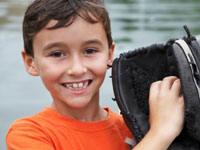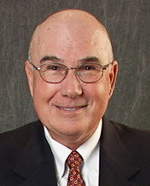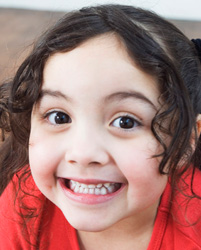Children's Speech Problems

What did you say?
We've all heard young children speak "baby talk." Sometimes it can sound endearing — it may be a speech defect.
In early infancy, babies begin to make vowel sounds, usually mastered by age three, when they are finished teething. Consonant sounds are more difficult and come a little later on. By the eighth birthday, most children can pronounce all consonants and are 100% intelligible. But some children have more difficulty with speech and may need help learning.
- Lisping — The most common speech defect is lisping, which is relatively easy to correct. Children who lisp cannot produce "s," "z," "sh," "ch," and "j" sounds. A lisp is heard when children cut off an "s" with the tongue instead of the front teeth. Prolonged thumb sucking or finger sucking can create an open bite and result in a lisp. Other causes are the loss of a primary tooth, impaired hearing, undeveloped ability to discriminate sounds, imitation of a relative or friend who lisps, or neurological disturbances.
- Cleft palate — A cleft palate can dramatically affect a child's speech, and often requires oral surgery. Sometimes an orthodontist provides a plastic plate to cover the opening in the roof of the mouth — this allows the child to develop normal speech patterns until surgery can correct the palate.
- Tongue thrusting — Tongue thrusting is another problem that can impair speech. This is essentially "reverse swallowing," and can cause improper tooth alignment. It may result from prolonged thumb sucking, which leaves a gap between the teeth and fosters the habit.
Your pediatric dentist may notice a speech problem first. The dentist often works with a team, including a speech pathologist, orthodontist and oral surgeon, to correct the speech problem. Your family dentist can let you know if they think anything is amiss with your child's developing speech patterns.

+Jim Du Molin is a leading Internet search expert helping individuals and families connect with the right dentist in their area. Visit his author page.
Baby Teeth: Dental Care Before The Tooth Fairy.

A child's first dental visit to the pediatric dentist is usually scheduled around his second birthday. But what happens before baby (primary) teeth fall out and the tooth fairy pays a visit is vital to a child's well being.
A healthy set of baby teeth can ensure proper facial development, and that your baby will speak and eat properly.
Whether breast-fed or bottle fed, baby gums need to be cleaned after every feeding. Simply moisten a gauze square and gently wipe away plaque. Never put a baby to bed with a bottle containing anything but water. (Read labels carefully: many infant juices contain sugar.)
After all 20 baby teeth have come in -- between 2 and 3 years – begin regular brushing. Make it a fun experience for you and your child. Beginning at about 2-1/2 years, examine your child's teeth every three months. Using a dental mirror, hold it behind the tooth surfaces and shine a penlight onto the mirror. Check for stained areas you may have missed with disclosing tablets (available at your pharmacy). If a child has a fall or is in a fight, look for any baby teeth that look blue -- a sign of injury, and call your pediatric dentist.
Research shows that kids who are brushing their teeth by the age of five will continue this habit all their lives. So give your child a head start on good dental health.

+Jim Du Molin is a leading Internet search expert helping individuals and families connect with the right dentist in their area. Visit his author page.








